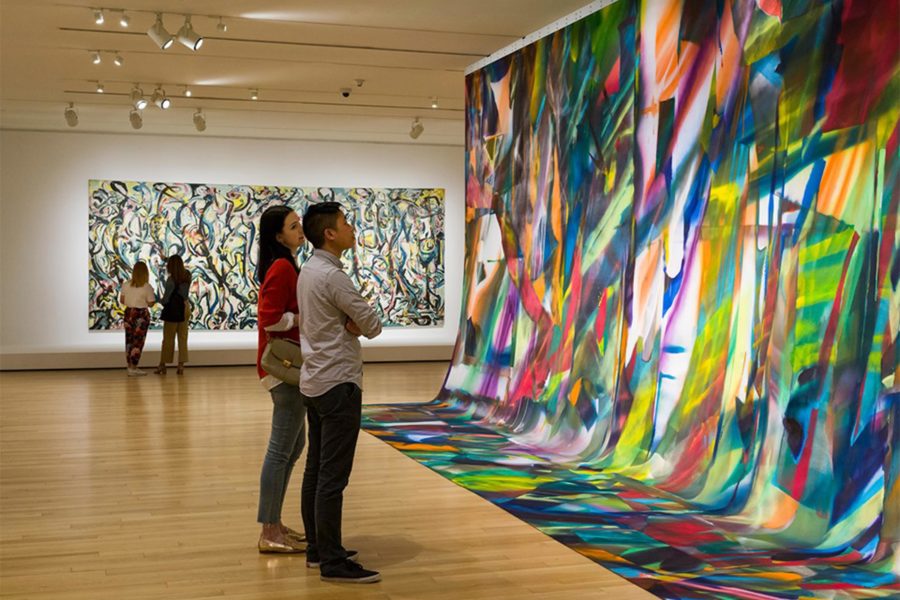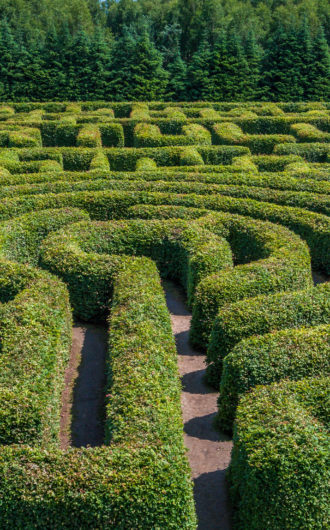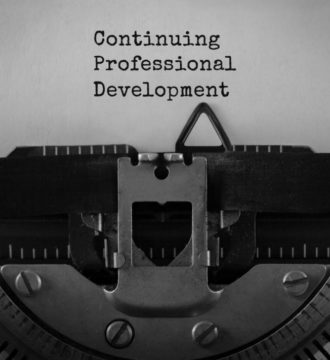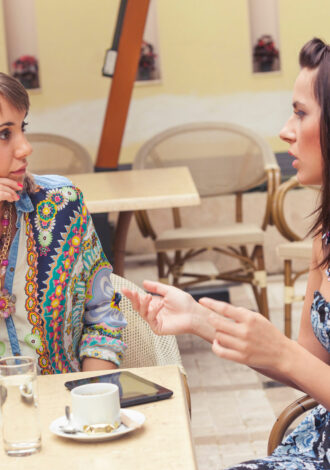Have you ever noticed, while strolling the halls of the Boston area’s great museums and galleries, that there’s one glaring issue that’s hard to look past? In case you haven’t, we’ll tell you: There’s an utter lack of representation of female artists.
Aside from a few token pieces by household names like Frida Kahlo and Georgia O’Keeffe, trailblazing women artists just aren’t getting their due.
According to Museum of Fine Arts, Boston curator Nonie Gadsden, women make up over 50 percent of art school students, today. So why, then, aren’t we seeing those statistics reflected on gallery walls?
“There have always been women artists,” says Gadsden. “But, women artists haven’t always had the opportunity to get the recognition or the attention that they deserve.”
Gadsden is working to remedy that discrepancy by leading a takeover over the MFA’s third floor, where, starting in September and running for 18 months, the heralded museum will feature all women artists in celebration of the 100th anniversary of women’s suffrage.
On display, expect lesser-known powerhouses like Luchita Hurtado, a 98-year-old surrealistic landscape painter who was overshadowed by her artist husband until very recently, and Belle Kogan, the only female founder of the Society of Industrial Designers in the 1940s.
“We hope, through this exhibition, to shine a spotlight on this gender inequity that, we freely admit, the MFA has played a role in,” says Gadsden. “We hope to change our ways when we’re thinking about collecting and exhibition moving forward.”
Until then, there are a number of works by women in the museum’s permanent collection that are on view for visitors to enjoy. We’ve picked a few that illustrate the breadth and power of women’s art.
3 Works of Art By Women
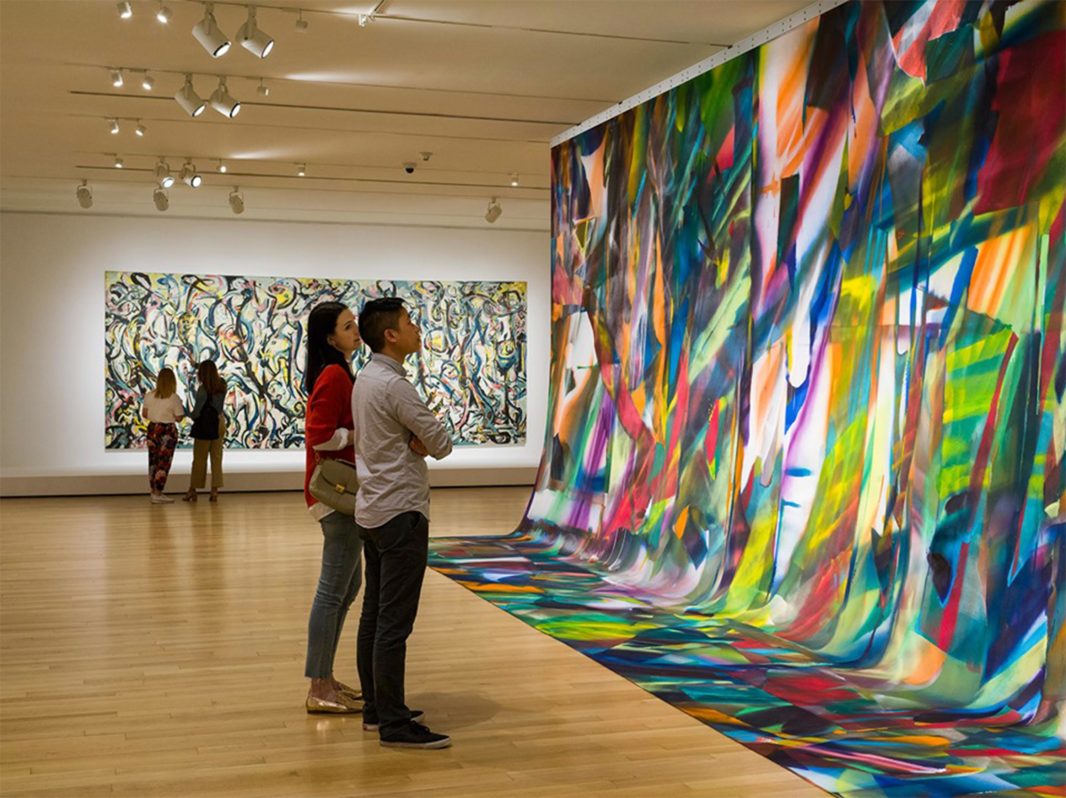
Untitled by Katharina Grosse
Untitled by Katharina Grosse
2019, United States
Contemporary artist Katharina Grosse created this site-related work for the MFA to be displayed alongside Jackson Pollock’s largest mural. Grosse has been working in aerosol to make her signature, large-scale pieces since the 1990s. Her energetic abstract “Untitled” is meant to be experienced, not just seen, in the round. The MFA heralds her as one of the most important artists of her generation. Paired with Pollock, Grosse’s work serves as a reminder that women deserve equal representation to men on the artistic stage.
Where to find it: Charlotte F. and Irving W. Rabb Gallery (Gallery 155)
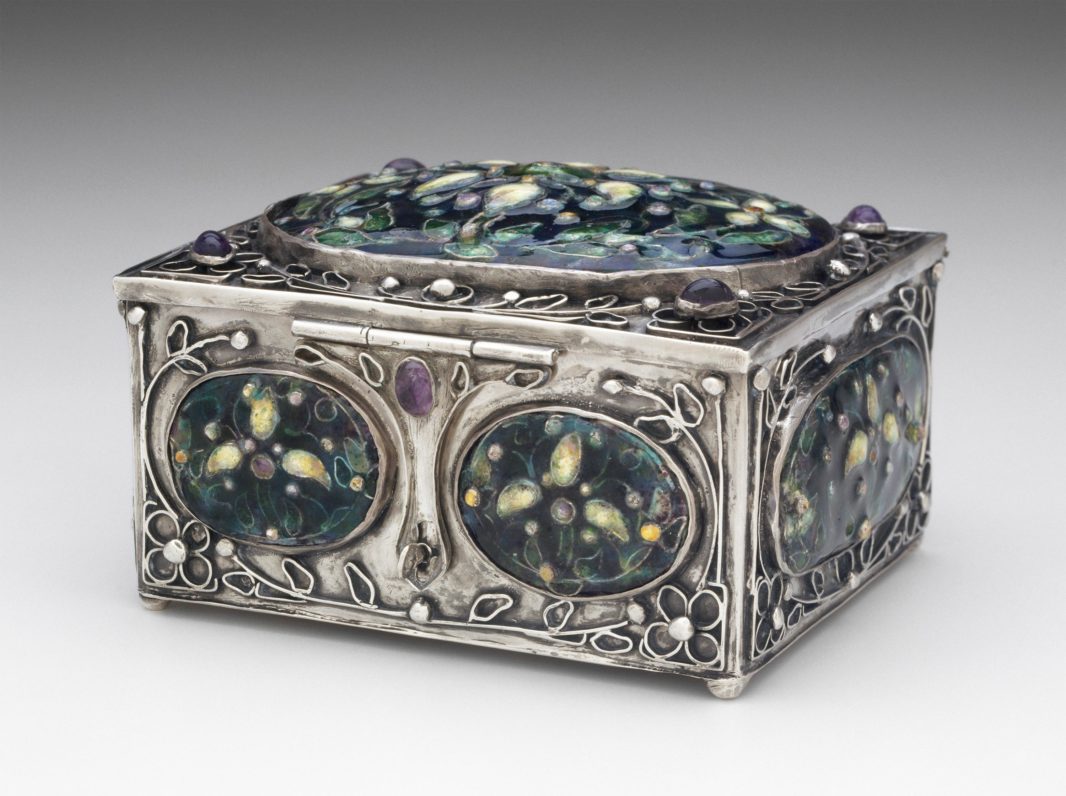
Courtesy of the MFA Boston
Box by Elizabeth Ethel Copeland
Box by Elizabeth Ethel Copeland
1912, United States
Elizabeth Copeland was born in Revere, Massachusetts, and, against all odds, became one of New England’s most prominent enamelists. Her skill is clearly illustrated in this intricate, rectangular box decorated with oval sections of floral cloisonné enamel in a rich, natural palette. Her close friendship with a woman involved in collection at the Museum of Fine Arts led to her gaining some much-deserved recognition, locally.
Where to find it: Rita J. and Stanley H. Kaplan Family Foundation Gallery (Gallery 104)
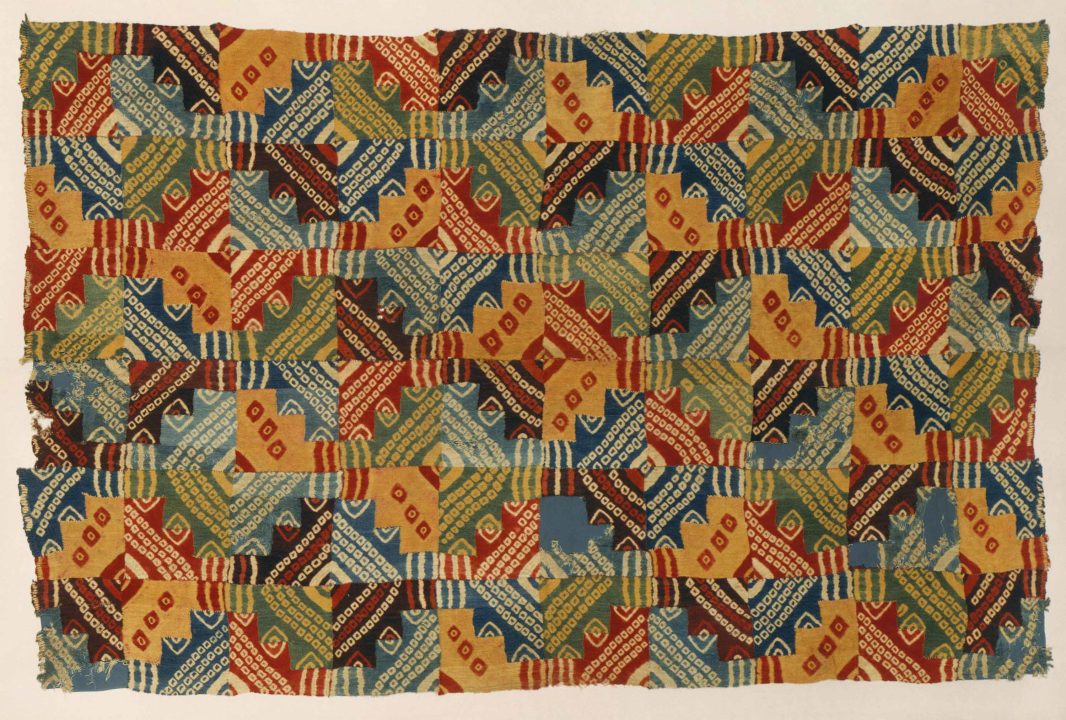
Courtesy of the MFA Boston
Mantle from Wari Tribe
Mantle from Wari Tribe
700–900 A.D., Peru
In the ancient world, women were the primary producers of textiles for domestic, state and religious uses. This mantle, like the many others in the museum’s collection, illustrates the laborious artistic details of these pieces. Woven in wool, it would have been assembled, dyed and then reassembled to achieve the desired design effect. Historic works like these are a reminder that women artists have been in play for centuries, whether or not they were given credit for their work.
Where to find it: Pre-Columbian Gold and Andean Civilizations Gallery (Gallery LG33)



 3 min read
3 min read